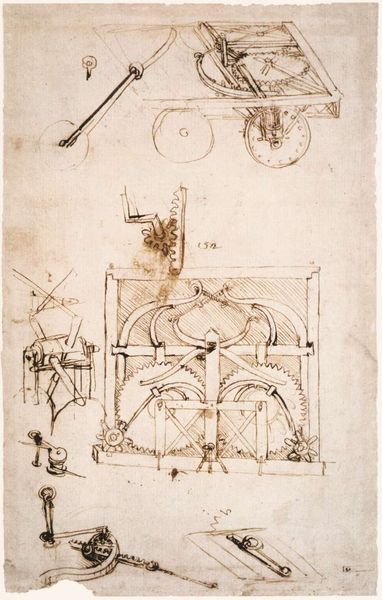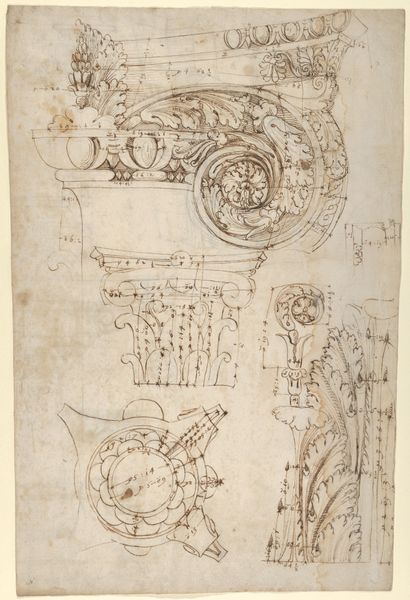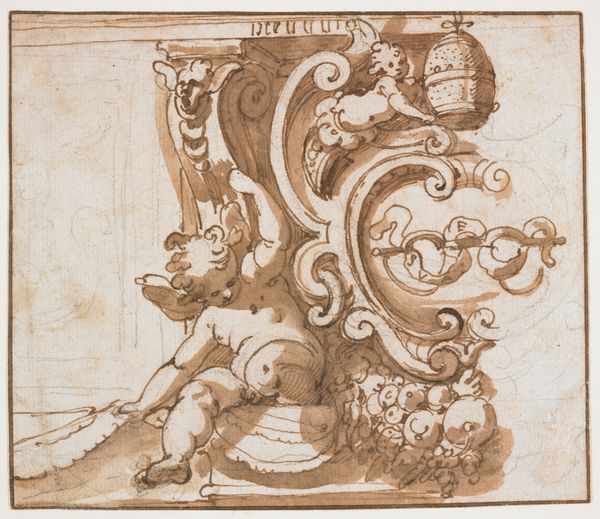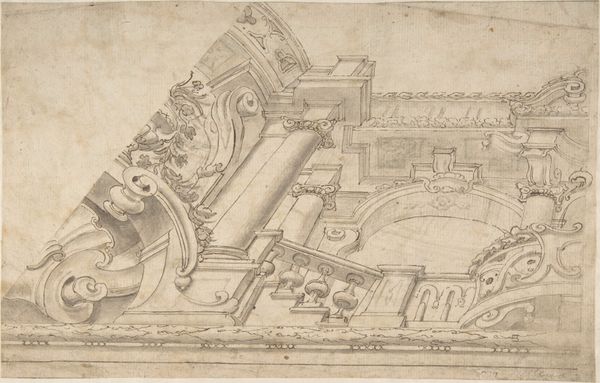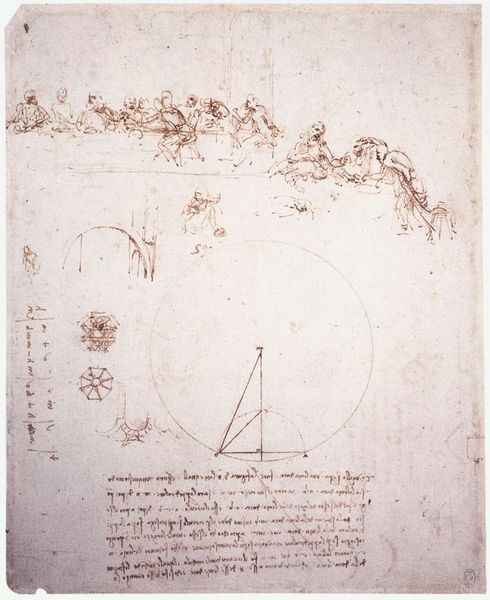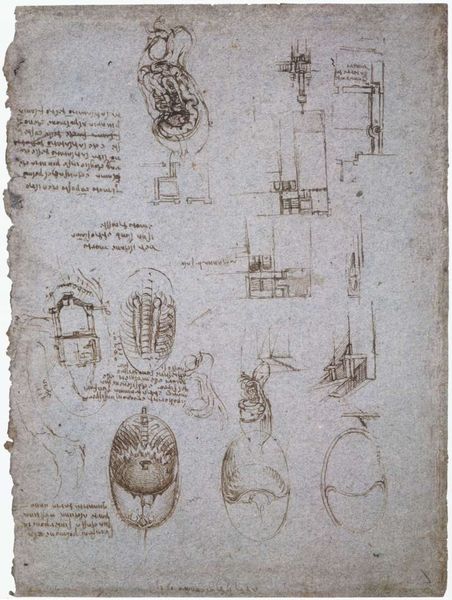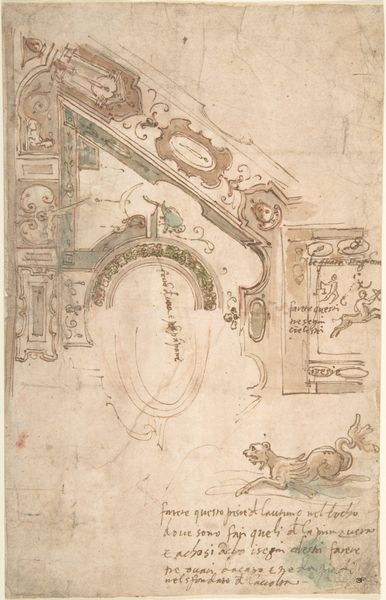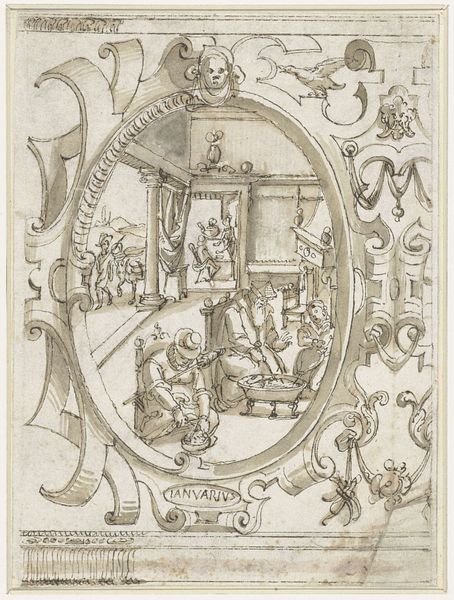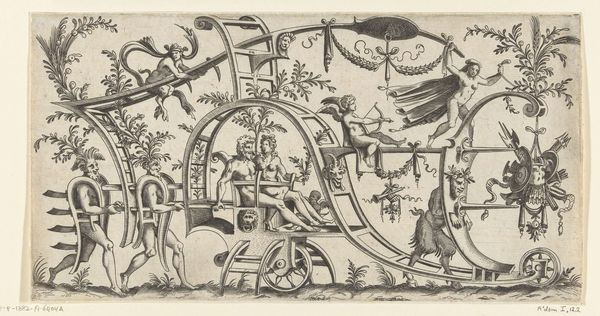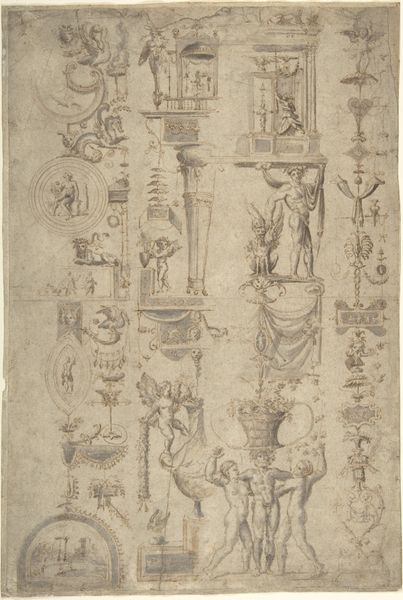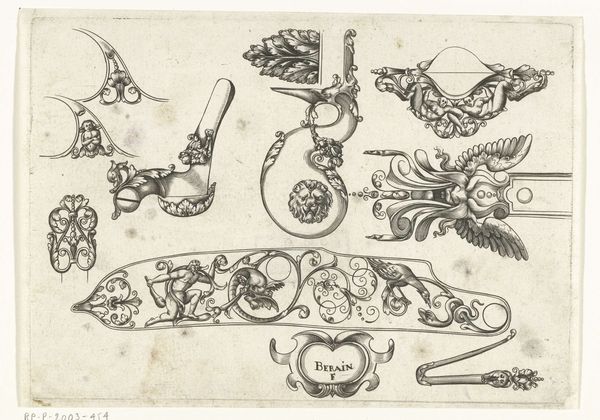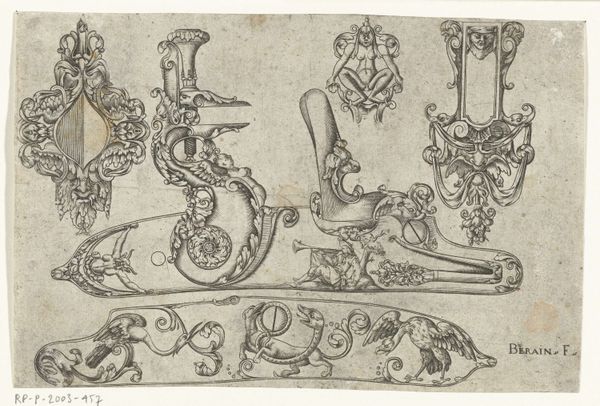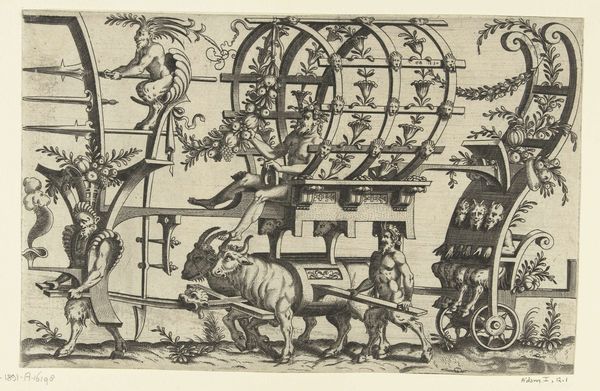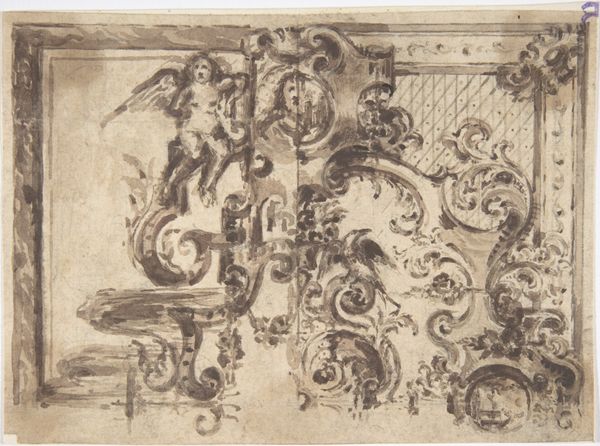
drawing, ink
#
drawing
#
pen sketch
#
landscape
#
form
#
11_renaissance
#
ink
#
line
#
history-painting
#
italian-renaissance
Copyright: Public domain
Editor: Here we have Leonardo da Vinci's "Scythed Chariot," a pen and ink drawing from 1483. It feels so chaotic, like a snapshot of a brutal, fast-moving moment. How do you interpret this work? Curator: Well, this drawing operates on multiple levels. Beyond its depiction of a war machine, we can see a commentary on power and violence inherent in societal structures of da Vinci's time. Considering the socio-political context of Renaissance Italy, perpetually embroiled in conflict, this "Scythed Chariot" could be seen as a critique of militarism, even the masculine ideal of warfare. What are your thoughts on its implications? Editor: It’s hard to ignore the sheer destructive capability the chariot represents. It makes me think about today's weapons and the military industrial complex. Curator: Precisely. Da Vinci's work allows us to draw parallels across centuries, prompting reflection on the ethical implications of technological advancements used for aggression. The sketch isn't merely a historical artifact; it’s an enduring testament to the destructive tendencies within human society, something that continues to be discussed today. Does seeing the work within this context alter your initial reading? Editor: Definitely. I was focused on the artistry, but now I see how relevant this critique of war is, even today. Thanks for shedding light on this. Curator: Indeed, engaging with historical artworks can unveil critical dialogues that challenge power dynamics, prompting a more profound awareness of our own social reality. It's about decoding visual texts and understanding their sustained reverberations.
Comments
No comments
Be the first to comment and join the conversation on the ultimate creative platform.
